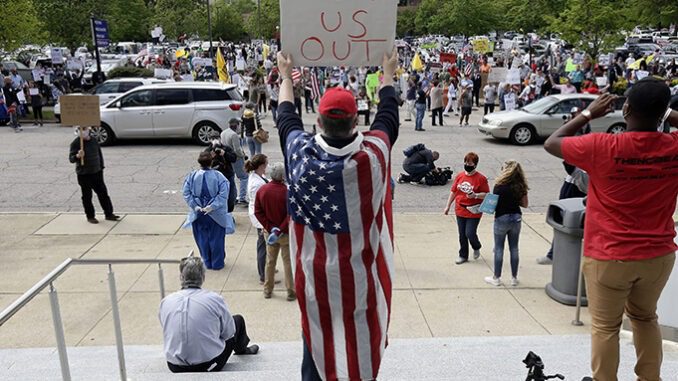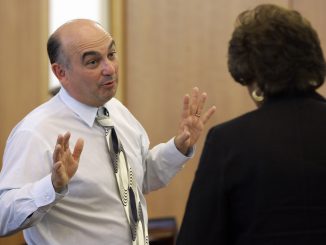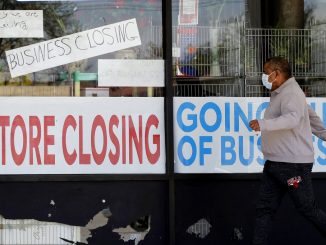
RALEIGH — As Americans prepare to ring in the New Year, it’s clear 2020 will go down as being one of the worst. But from a purely economic standpoint, the virus has impacted businesses and workers in starkly different and very specific ways, creating winners of many big businesses (such as health care companies, consumer goods giants, and technology manufacturers) while battering smaller ones (notably ones that rely on personal contact such as those in the hospitality and services sectors). As the Wall Street Journal recently noted: “The tactics that helped many corporate titans thrive – laying off thousands of workers, going deep into debt, and grabbing market share from struggling competitors – will shape the recovery for months, if not years.”
On a statewide level, the coronavirus has had a similarly uneven impact on North Carolina’s various industries and its overall economic recovery. According to Dr. Michael L. Walden, a William Neal Reynolds Distinguished Professor and Extension Economist at North Carolina State University, the national and local economies will lose about 3% of their production this year but should fully recover by the end of 2021. However, he says, unemployment will continue to be higher due to permanent job losses in some industries. “Personal contact jobs will never fully come back, and the small business bankruptcy rate could be as high as 25%,” Walden notes. “It will be a long road back for small businesses. Industries that may do well on the other side of the pandemic include technology (all this zooming), pharmaceuticals, and – interestingly – textiles, if we stockpile masks and gowns.”
John E. Skvarla who formerly served as Secretary of the N.C. Department of Commerce as well as Secretary of the NC Department of Environmental Quality says he fears major impacts on NC industry have not yet been measured and will be significant. “Not just from a current perspective but in the intermediate and long term someone still has to repay all the debt that was created to bridge the cash crisis. There will be a negative trickle-down effect and the tax increases and regulatory changes will be felt for years to come.”
On the brighter side, he agrees that some of the biggest winners will be the area’s many medical laboratories. “LabCorp did $11.5 billion in revenue last year, just wait to see 2020 and 2021 numbers!” he says. “Other big winners are companies like Wal-Mart who were chosen without real reason to stay open while the little guy doing the same thing got crushed, and health care supply manufacturers for drugs, equipment and supplies.”
“Personal contact jobs will never fully come back, and the small business bankruptcy rate could be as high as 25%.” — NCSU economics professor Dr. Michael L. Walden
Dr. Walden says our state’s statistics on job losses and deaths per capita are actually good compared to other states, including in the South. “I think N.C.’s economic brand will be intact after the pandemic,” he says. “The state may even benefit from households and businesses relocating from states impacted more adversely, such as those in the Northeast.”
To this point, the N.C. Chamber Foundation recently released a research report examining the pandemic’s impacts as well as opportunities heading into 2021. The foundation works to promote the social welfare of N.C. by identifying, studying, researching, and analyzing, in a nonpartisan manner, the factors that enhance the state’s business climate, workforce development, and quality of life. The organization’s president Kelly Fuller says moving forward businesses will need to reconsider the ways they recruit and maintain talent.
“We have learned many lessons this year, yet 2020 has taught one lesson most clearly: hope for the best but be prepared for disruption,” says Fuller. “This report is a tool to help us strategically face the challenges and opportunities coming in 2021. In terms of workforce development, we must match unemployed North Carolinians with job openings, offer training and reskilling for displaced workers, and provide enhanced childcare options.”
Among the report’s key findings:
- Economic sectors were affected unequally in both North Carolina and the U.S., including substantial and sustained losses in the leisure and hospitality industries. Manufacturing employment in North Carolina was hit notably harder than in neighboring states.
- North Carolina’s General Fund budget has not been as negatively impacted as many feared, with conservative practices providing some cushion against cutbacks in government employment and services. Many other states are not as fortunate.
- Bankruptcies, evictions and foreclosures, and commercial real estate disruption will continue to be headwinds in 2021.
- However, North Carolina’s high quality of living may allow the state to benefit from interest in more remote work, supply-chain resiliency and redundancy, and likely growth in the state’s historically strong presence of biopharma and other innovation sector companies.
Experts agree that up to this point the rising spread of the virus and related restrictions are holding back a meaningful recovery. As Michael Pearce, a notable U.S. economist at Capital Economics put it, “You can give consumers cash but if they’re not comfortable or able to go out and spend it in the economy it’s not going to do a lot of good to boost the economy in the near term.”
There are certainly highs and lows when it comes to how state and federal governments have handled the crisis. Walden says in his view the burden of helping the economy has been at the federal level, because only there can the government borrow trillions of dollars. “I give the federal government high marks (grade of B) because they initially acted rapidly and decisively. The slowness in getting the last stimulus plan, however, was not their finest day.”



